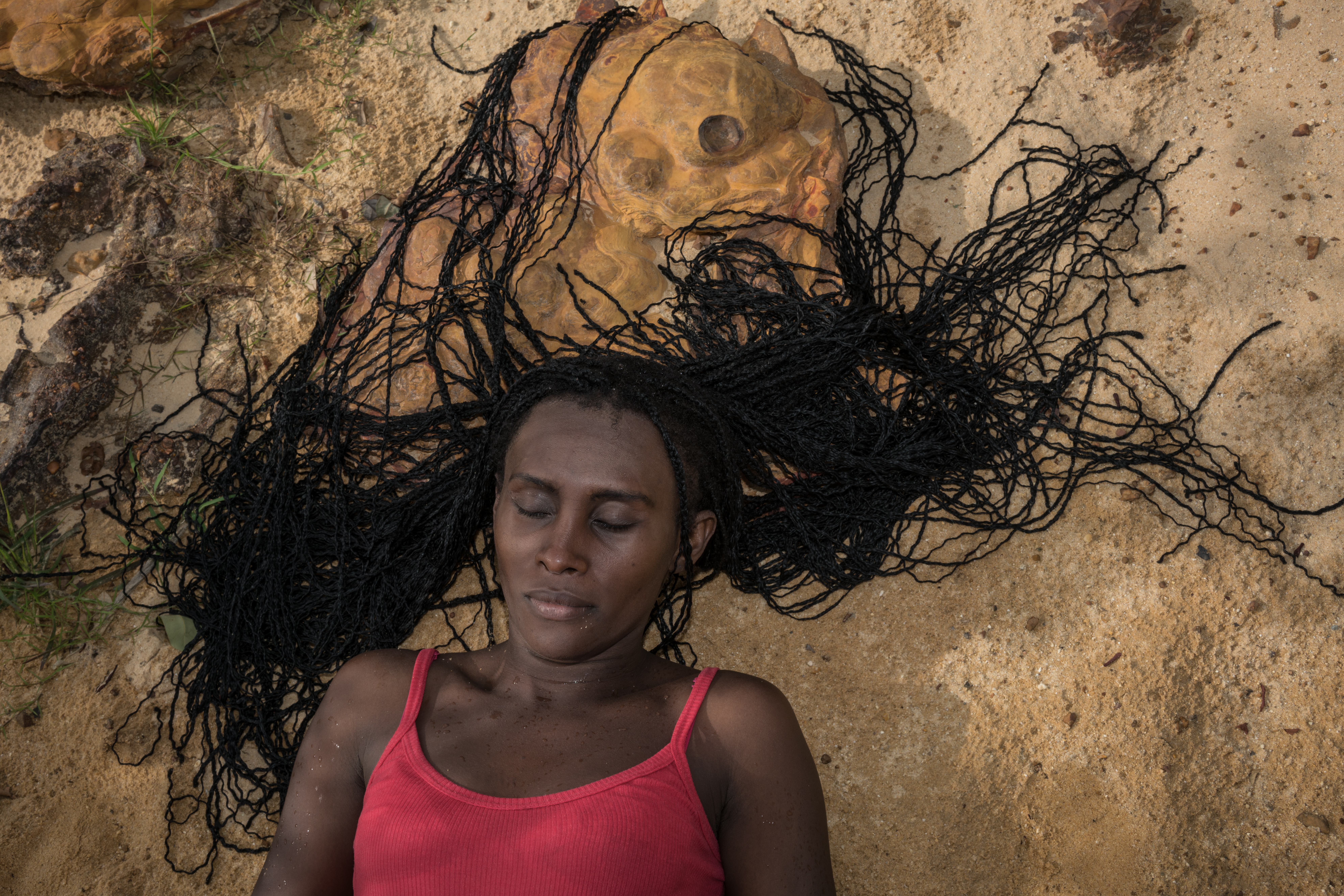Last Updated on 03/09/2020 by Joy Celine Asto
Since 2015, Colombian documentary photographer Juanita Escobar has been immersing herself in the vastness of the land surrounding the Orinoco River, diving deep into the lives of the women entangled in the Colombia – Venezuela border crisis.
While border crisis issues typically suggest big picture narratives and large-scale issues, Colombian documentary photographer Juanita Escobar has chosen to focus her efforts on the complex lives of women who have settled along the Orinoco River. Straddling the Colombian and Venezuelan border, the river is a symbol of geographical divide, border conflicts, and numerous adversities that Juanita has found women, in particular, vulnerable to. In her long-term documentary series, she has been traversing the expanse surrounding, immersing herself in the lives of the women who now call it home.
Editor’s Note: Visual Momentum refers to the flow of storytelling and its effect on the viewer’s thinking process. This series highlights creators who are successfully using their tools and minds to create an impact on the world through imagery with the intent of inciting action. With the support of Fujifilm, we share their stories. Be sure to also check out the interview on This Week in Photo.
Juanita has been working on the Orinoco project since 2015, but her relationship with the river actually spans ten years. “For seven of them I rode alongside the plains people of the Orinoco savannah on horseback, but I had never seen the mythical river that gives the region its name,” she wrote on Witness in 2018. When she finally did, she couldn’t escape what she considered to be her El Dorado: the need to tell the stories of this land, searching for the “visual marks left by the earth, river, and jungle in the faces of the people, in their skin.”
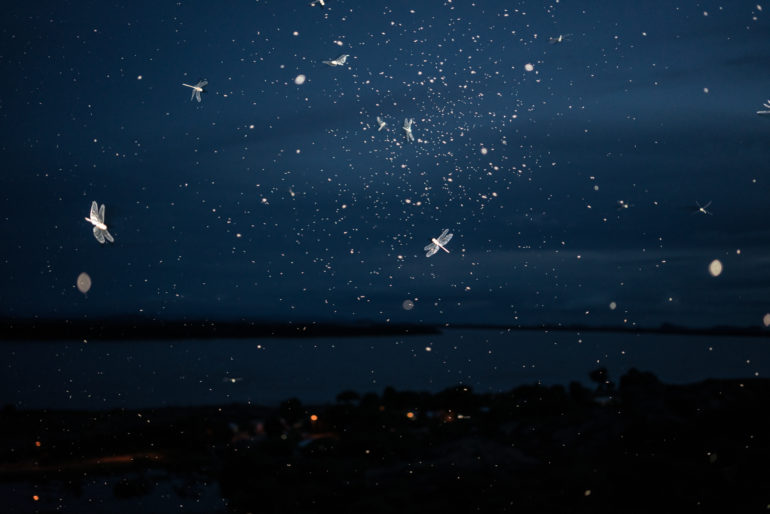
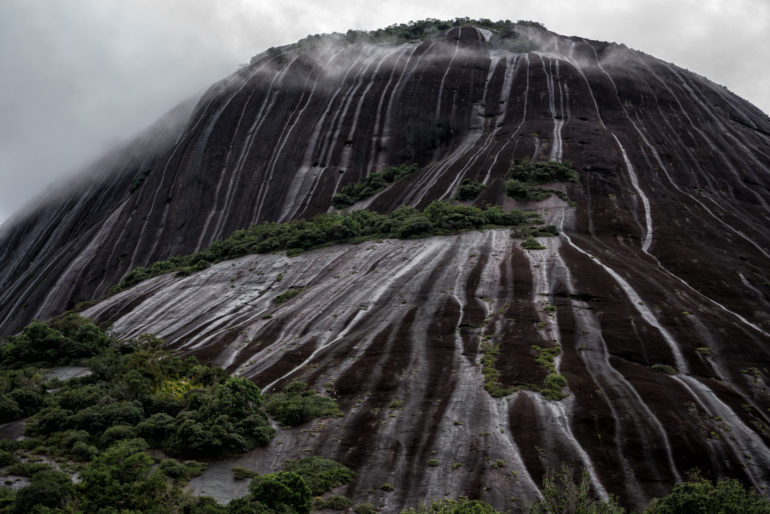
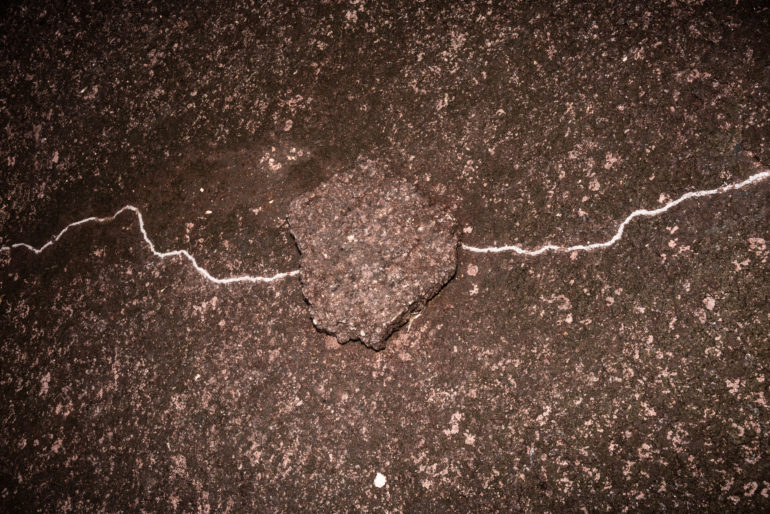
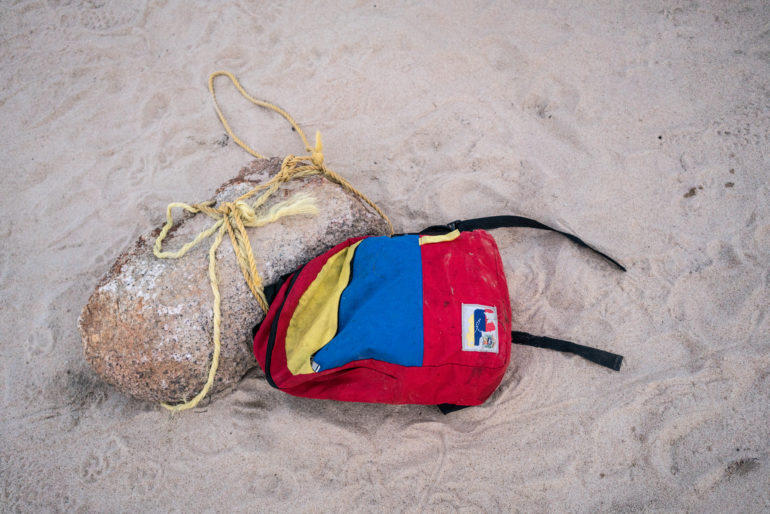
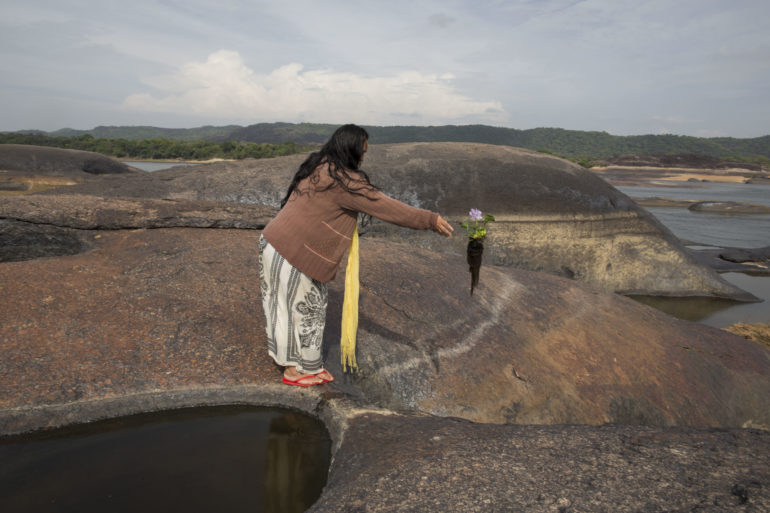
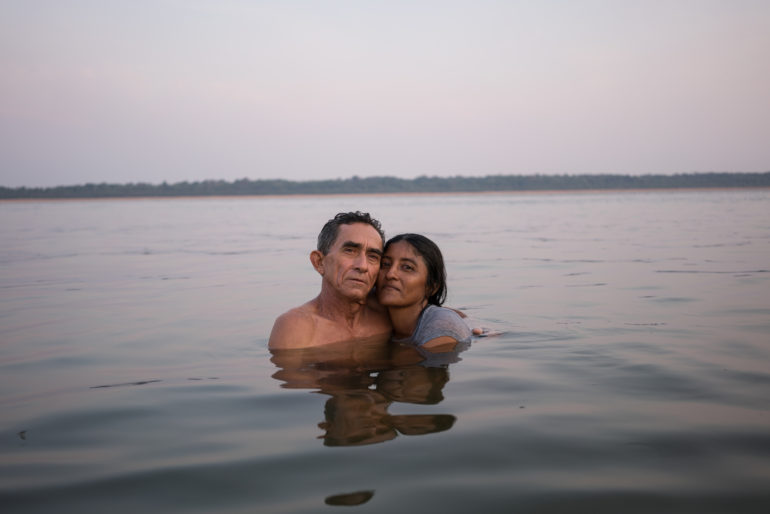
Women Caught in the Crossfire
When the Colombia-Venezuela border conflict broke out in 2015, it created a large-scale diplomatic and humanitarian crisis that affected individuals and separated families from both sides. Juanita found that women were the most vulnerable and “have suffered the impacts of borders most severely.” This prompted her to delve deeper into the realities and perils plaguing their daily life, and present them in her own visual style. “I have therefore decided that it is their legacy, wounds and present conditions that should be recorded in this first part of a project intended to be long-term.”
“For some, the border is the limit between Colombia and Venezuela. For others, it is an encounter with colonizers and their discrimination. There is an urgent need to recount the shocking tales of the most marginalized, like those that tell of drug addiction and child prostitution, common among Amorúa girls and teenagers in the departmental capital of Puerto Carreño. The landscape becomes darker still when we add to it the humanitarian crisis and breakdown taking place in Venezuela, which has led to a monumental increase in prostitution.”
A Human Rights Watch report from August 2019 backs up Juanita’s statement. Apart from violence and egregious abuses and health problems, Venezuelans who have fled to areas along the border also face other dangers. Women and girls have turned to sex work to support themselves are also at great risk of sex trafficking. “Humanitarian workers told us that Venezuelan women and girls in Arauca have been victims of sex trafficking. Earlier this year, two Venezuelan girls escaped from a brothel in Arauca, where the owners had taken their IDs and forced them to engage in prostitution. In Catatumbo, Venezuelan girls as young as 12 are in relationships where they exchange sex for as little as $2.”
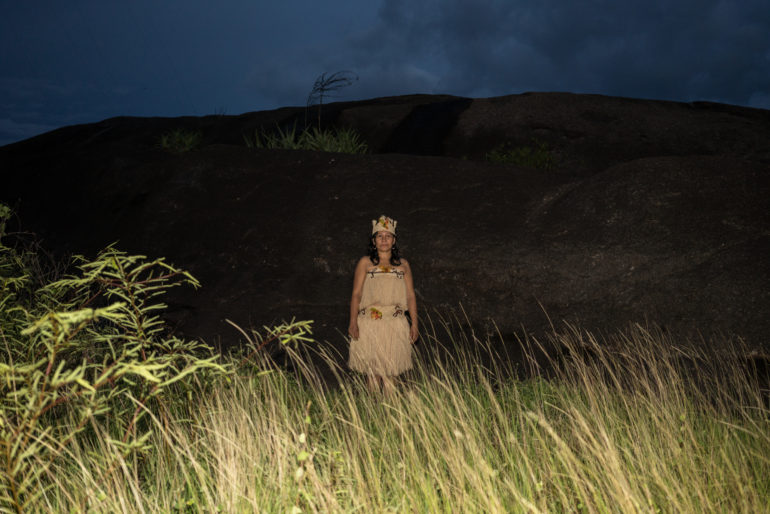
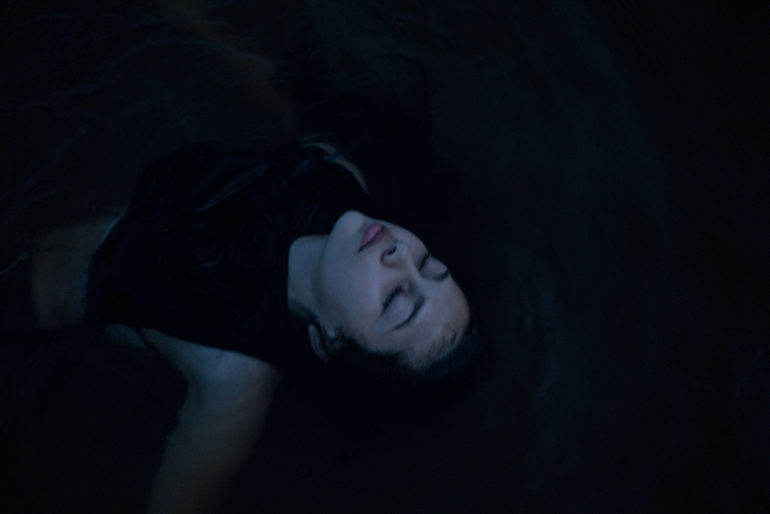
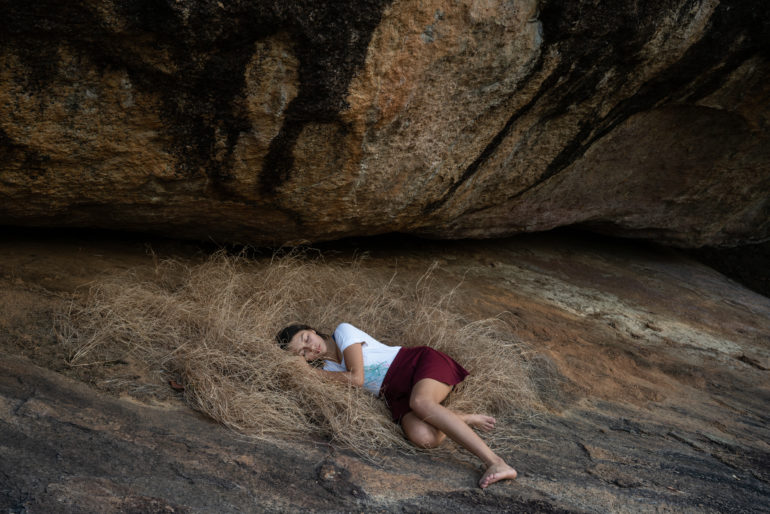
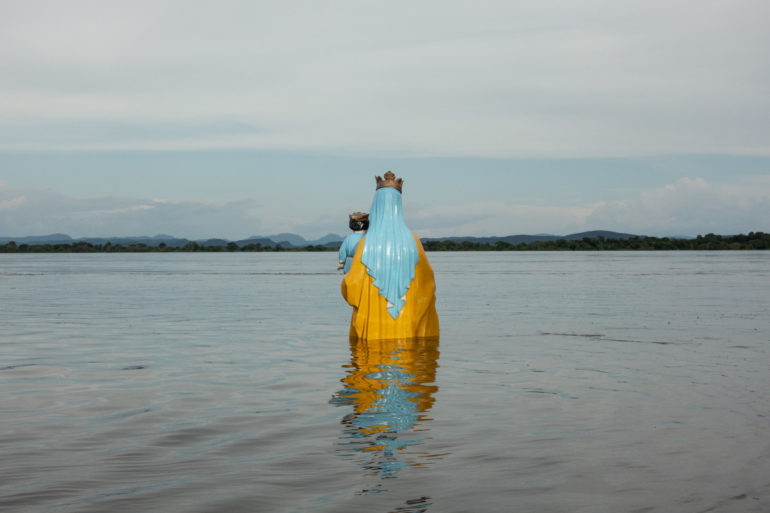
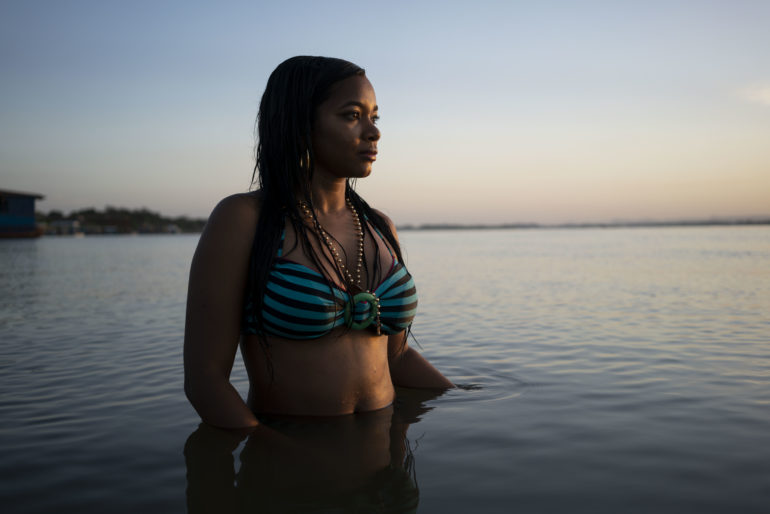
Traversing Orinoco and Its Perils
Juanita’s eponymous documentary story is set in the Orinoco River in the Colombian department of Vichada, which marks the border between rural Colombia and Venezuela. Specifically, she traverses 330 km out of the 2,200 km that span the border. She describes this area as “a vastness of earth that sows deliriums. A vastness of water that allows them to rush forth.”
She began her narrative by covering the stories of the indigenous women who share this territory — Sikuani, Amorúa, Piaroa, Puinave, Curripaco and Saliva — and the Venezuelan women and the plains women. “They populate the area around this border, as nomads or sedentary inhabitants and are the ones who guide us through these territories where they are always on the move, allowing us to become part of their memory. The flow is not only of indigenous people who travel as part of their tradition; there are also Venezuelan migrants seeking hope on this rural border of the Orinoco.”
As an ongoing project, Orinoco has presented some significant challenges for Juanita. The most complicated of this, she said, is the situation in Venezuela, as crossing the border is very difficult for a Colombian, and a photographer to boot. “It is easy to travel by plane to Caracas, but to cross the borders, to visit communities that are on the other side requires passing alcabalas (checkpoints), inspections, fears…”
At least four groups also exercise control along the border, both official and illegal. Armed groups come from both countries. Because of these facts, she makes sure to be very cautious and only passed when she feels very safe and is able to speak and share with the Venezuelans from this side of the border. This is important, as she’s not interested in challenging the armed groups or causing distrust.
“My work is focused on the lives of the people, how they live the crises and conflicts in their families in their intimacy. I do not want to report or inquire into the explicit dynamics of the conflict on the border. What I am interested in are the more personal stories and being where I am welcomed and where people want to share their lives with me. I am careful then in that sense because I do not want to hinder my relationships or my well-being in this territory by challenging the different powers that severely control these borders.”
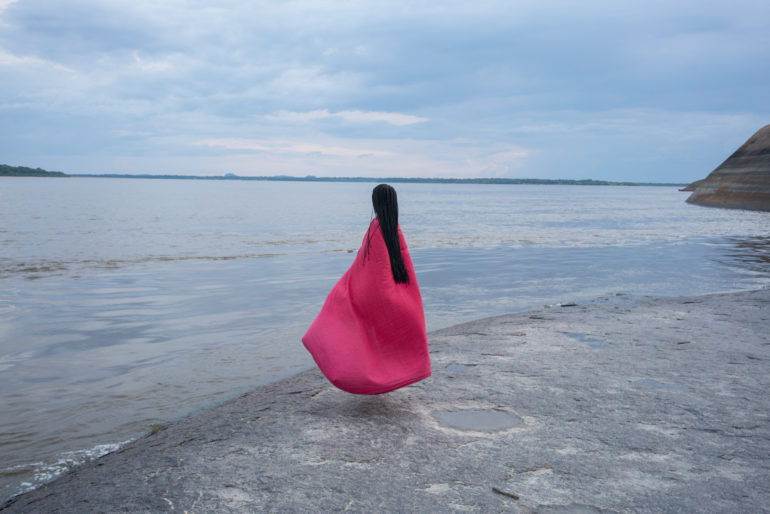
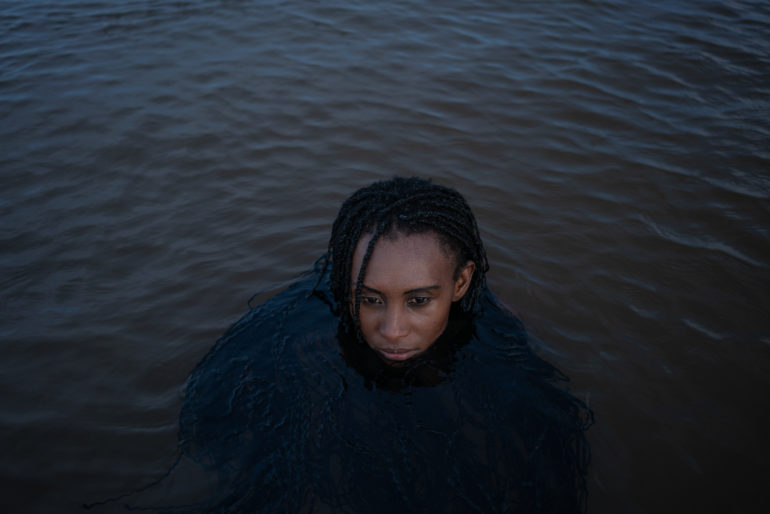
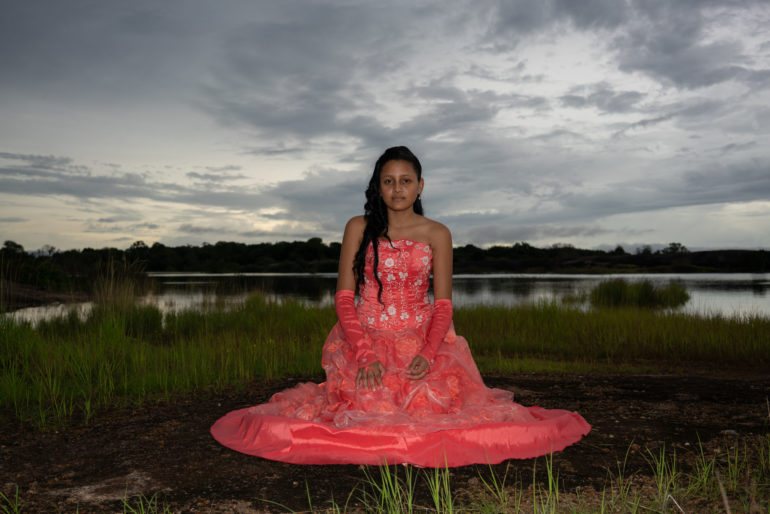
*There is an indigenous belief along all the Orinoco border that a “charm,” what they call “Mawari,” lives on the river depths. It is a mixture of human and fish, extremly beautiful and charming that offers food from the deepest part of the waters. Whoever eats this food will vanish forever in the mystery of the Orinoco. This project is also about this Charm of the Orinoco river, a woman Mawari, a woman dressed as a river.
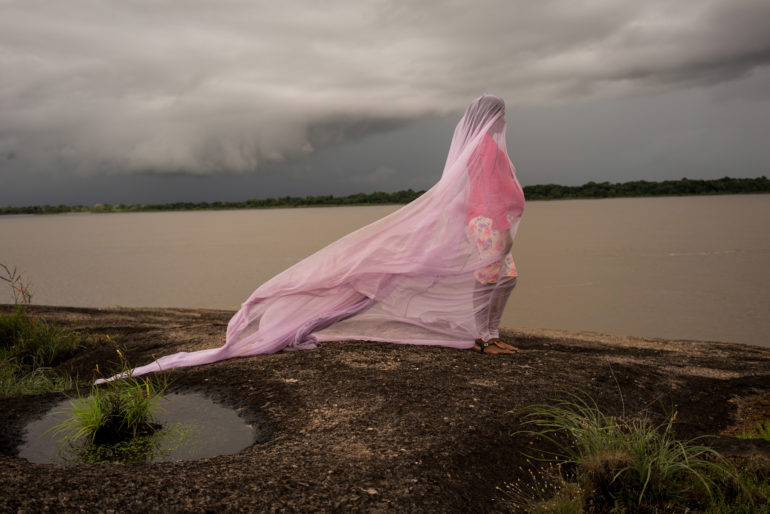
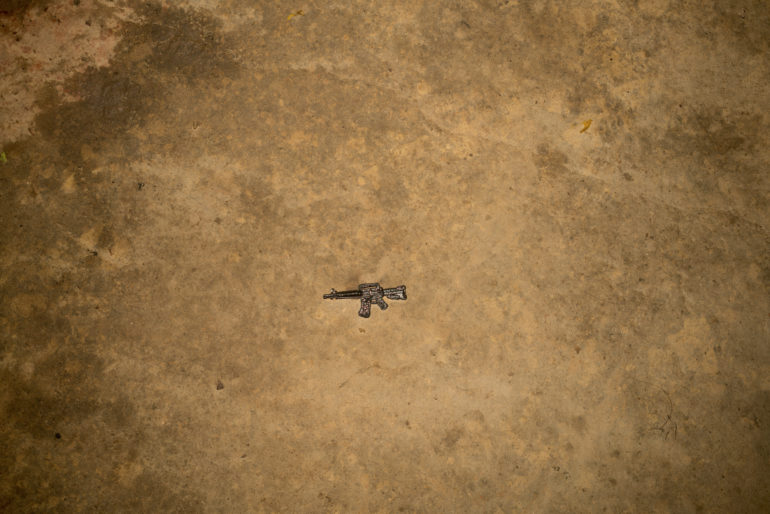
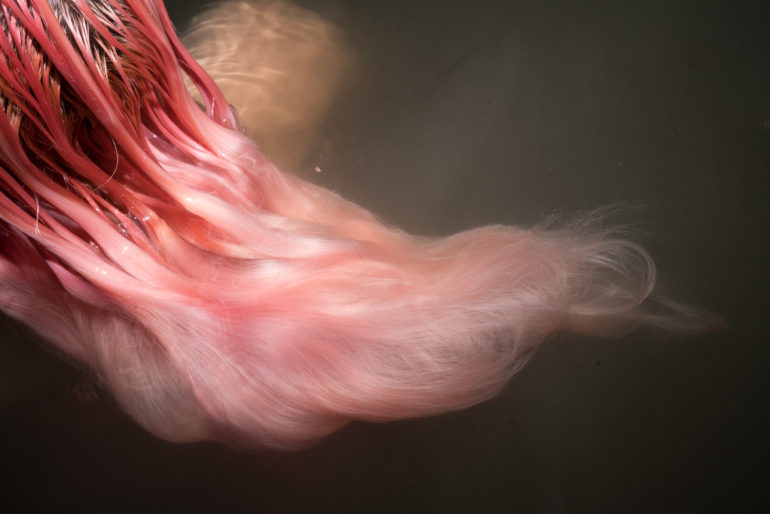
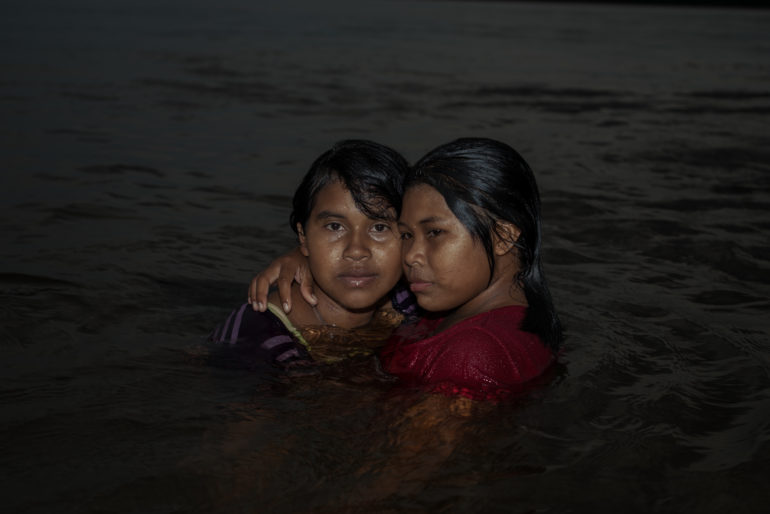
Going Personal to Tell Social Stories
Photographers like Juanita evidently do work that gives us an unseen and poignant view of societies across the globe. However, she notes that there is also a personal layer to her projects, the Orinoco included. “I would say that my work is personal because what is expressed is what I dream, what I see, what I live. But the term ‘personal’ is a little confusing because I’m not really talking about me, I’m talking about others. So, let me clarify: the work is personal in the sense that I spend a lot of time living and letting the stories be the ones that involve me, and make me understand their mysteries through time and friendship.”
Personal connections inevitably happen when photographers embark on long-term documentary projects, and for Juanita, it’s one of her sources of motivation. Knowing through people, she says, is not a method that one applies to a project, but “a way of being, of searching, of wanting to be.”
“I like to stay and live the stories that I tell, without a defined time, without pressures that interrupt my horizon, and thus share the day to day and let the confidence that comes from a friendship grow.
The people or families with whom I live have shared everything about them, and for me, that relationship is what is most valuable, they are not part of my work, but rather of my life; that is why I say that my work is very close to my way of living.”
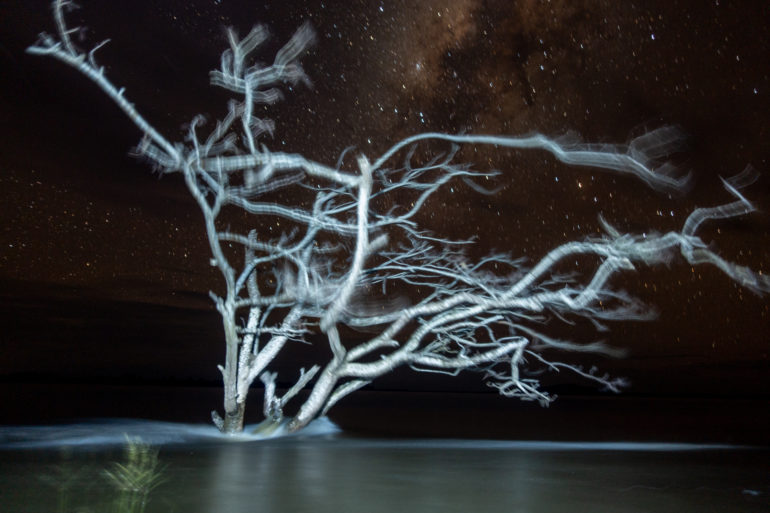
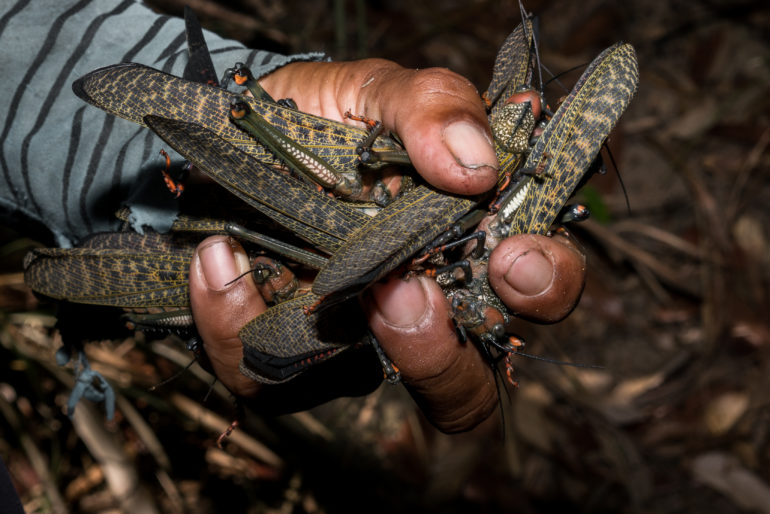
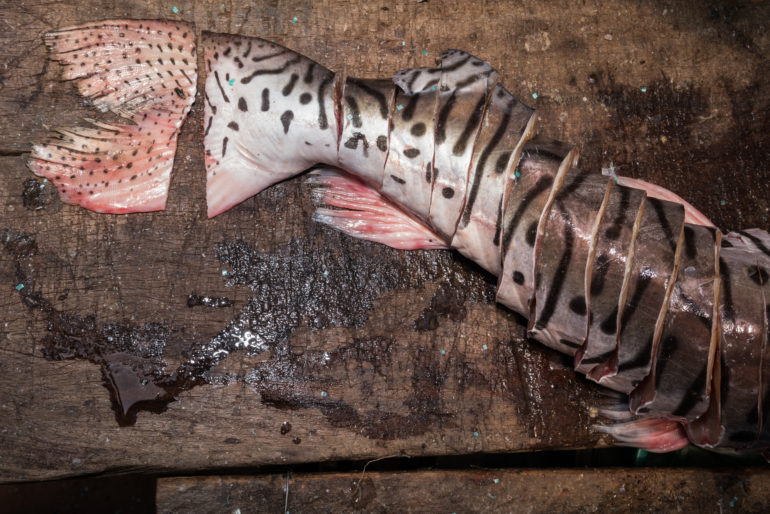
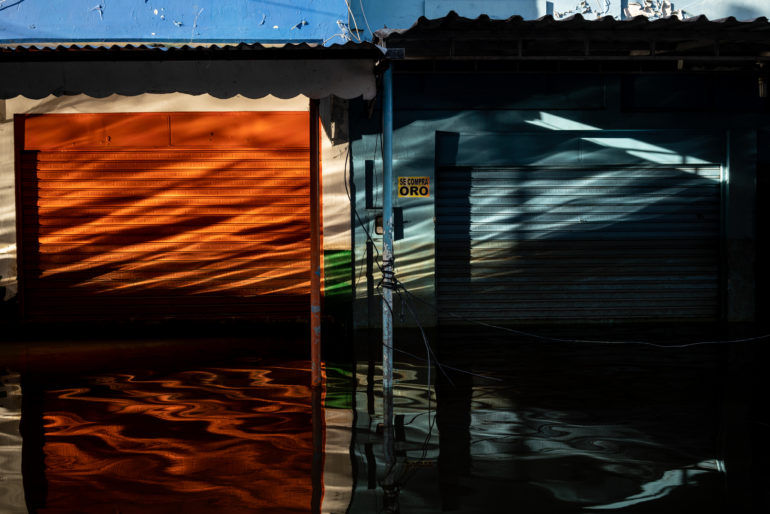
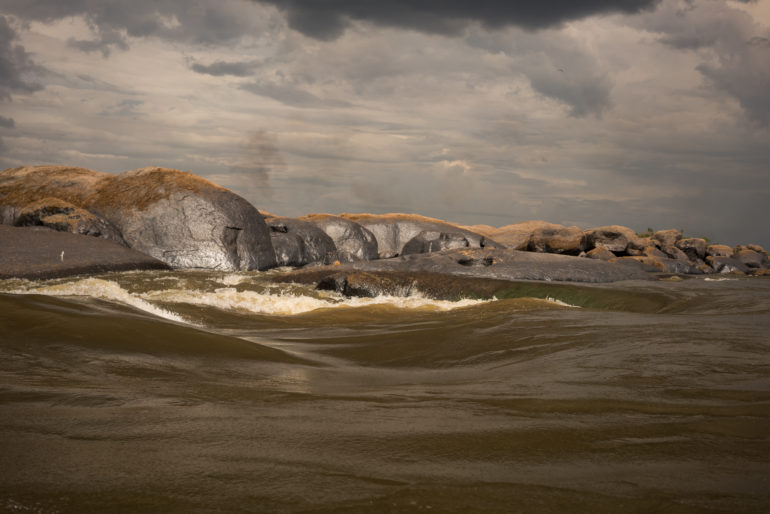
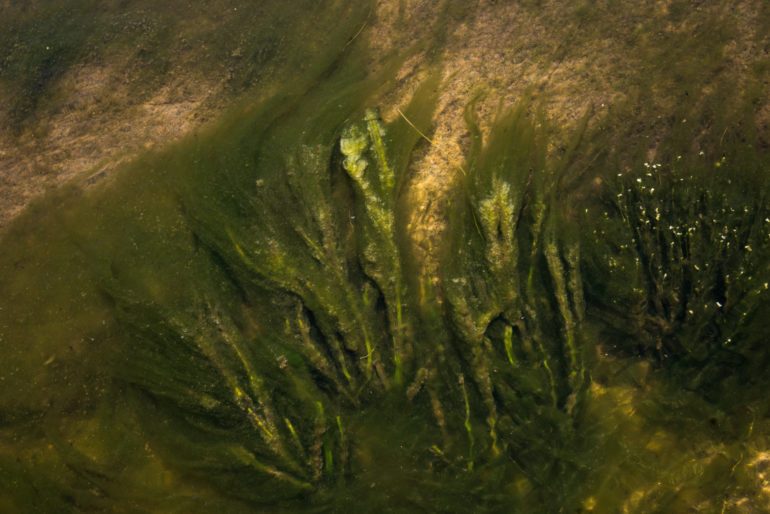
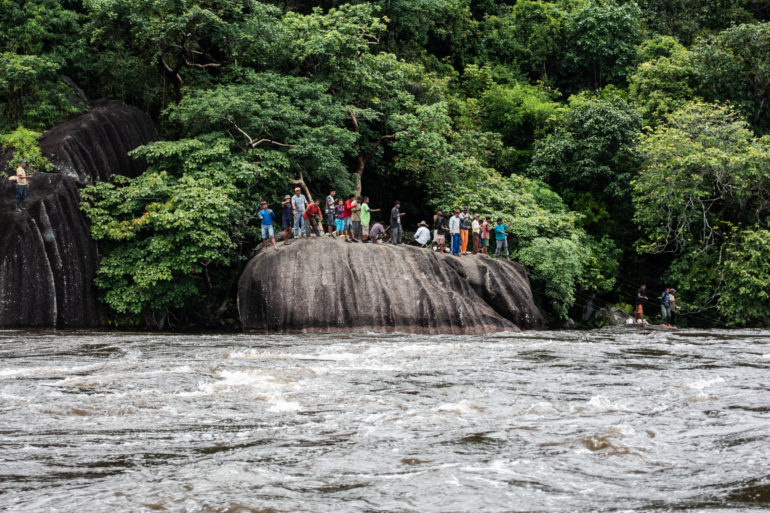
Photographing the Orinoco and Uncovering its Stories
As with her other documentary work, Orinoco is guided by Juanita’s own visual style, built on a sense of urgency to capture the emotions and sensations in the situation she tackles.
“I try to access a space where a memory or story can be told from an intimate point of view. I look for the imprint of the land in the face and the human body. I also look for strong human emotions that overflow and leave a mark on the landscape, and turn into mood or atmosphere.”
On her chosen tools of the trade, Juanita prefers a lightweight camera with a 35mm lens and flash; a setup that allows her to be close to people while still capturing their environment. She also uses a 50mm lens to get closer to her subjects for portraits. “Having lightweight equipment allows me to almost not think about it. It’s like a pen that you can easily take with you to write down ideas. With this, the camera is almost always with me, and I like that I don’t weigh myself down with it.”
While exploring the landscapes and communities for her project, Juanita often thinks about how much the territories contribute to the understanding of the history and culture of Colombia. She believes not getting close to the people, not understanding their lives, and not having a deep understanding of the cultural dynamics of these regions leads to “an illusory idea of a country.”
“What is most needed here in Colombia is education related to our own land, understood as the transmission of knowledge and ideas from one region to another, the dialogues that can be created between different times and cultures… One is surprised at how little we know about ourselves… the abundance of knowledge and ways of life that we ignore or that the State decides to not really take into account.”
About Juanita Escobar
Colombian documentary photographer Juanita Escobar focuses on gender and territory as the main themes of photographic research in her exploration of human behavior and the environment. Her working method is rooted in ethnography. For 11 years, she has been investigating in the Orinoquia, where she’s also currently working on a project that was awarded the Magnum Foundation Fund 2018. She is a member of the Colombian photography collective Colectivo+1 since 2016, known for the creation of the educational project 20fotógrafos.
A self-taught photographer, her interest and passion for cinema and photography began when she became part of a feature film in her city at 17 years old. After three years in the cinema industry, she decided to embark on a more solitary and personal approach to tell stories about her country, chronicling the different lives and conflicts within it. At 21, she arrived at the Orinoco plains, the land she believed she could explore with her dreams. She plans to continue traversing the territory and the immensity of its rivers and plains in search of personal stories to tell through visual narratives.
Juanita is the winner of the Colombian National Photography Prize in 2009 for her work People – Land, exhibited in the Santa Clara Museum, Bogotá. She also co-authored the book Silences: A Plain of Women published by Número in 2009. She was a recipient of the Crea Digital Scholarship awarded by the Ministry of Culture and Technologies in Colombia for the undertaking of the e-book, El llano a ras de cielo in 2012. Other noteworthy awards and recognitions she garnered include the Portfolio Review Prize from National Geographic Society for her nine-year long body of work, Llano, and participation in the World Press Photo Joop Swart Masterclass 2017 in Amsterdam.
Visit Juanita Escobar’s website and Instagram to see more of her work.
Editor’s Note: This is a sponsored blog post from Fujifilm.
About FUJIFILM North America Corporation (Fujifilm)
FUJIFILM North America Corporation (Fujifilm) is empowering photographers and filmmakers everywhere to build their legacies through sharing their stories. Grounded in its 85-year history of manufacturing photographic and cinema film, pioneering technologies in lenses and coatings, and driving innovation in developing mirrorless digital camera technologies, Fujifilm continues to be at the center of every storyteller’s creative vision.
Pushing boundaries in digital photography and filmmaking innovations, Fujifilm’s X Series and GFX family of mirrorless digital cameras and FUJINON lenses yield exceptional image quality for creators of all levels. Offering image clarity, advanced color reproduction technologies and a wide range of film simulations, Fujifilm’s family of mirrorless digital cameras delivers on fulfilling their intrinsic mission of capturing and preserving moments for generations to come.
With a Fujifilm digital camera at your fingertips, you can seize the moment, share your story and build your legacy. Learn more on our website.
Like us on follow us on subscribe on and join the conversation on Facebook, like us on Instagram, subscribe on YouTube and join the conversation on Twitter.
What momentum do you want to start?
It’s amazing how a single thought, action or personal passion can ignite something that can make a difference. As a fellow photographer, we invite you to share what drives you… what do you want to get started, build momentum to? It starts with you. Share your visual social stories with #visualmomentum.


